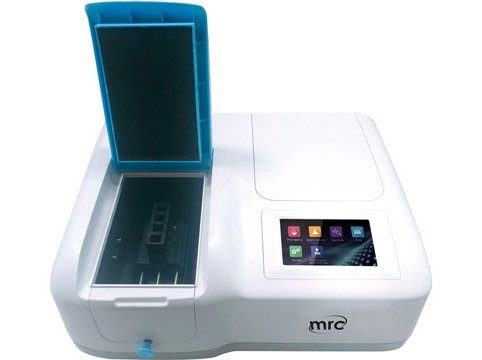To understand split beam spectrophotometers, we need to start with the basics. A spectrophotometer is an instrument that measures the amount of light absorbed by a sample. The core principle involves passing light through a sample and detecting how much is absorbed at different wavelengths.
Split Beam Spectrophotometers
Split beam spectrophotometers are a specific type of spectrophotometer that offer improved accuracy and stability. Unlike single beam spectrophotometers, which measure the light intensity before and after passing through the sample sequentially, split beam spectrophotometers use a beam splitter to divide the light into two paths simultaneously: one through the sample and one through a reference.
Components of Split Beam Spectrophotometers
- Light Source: Provides the initial light that will be split and passed through the sample.
- Beam Splitter: Divides the light into sample and reference beams.
- Sample and Reference Paths: The sample path passes through the substance being analyzed, while the reference path does not.
- Detector and Readout: Measures the intensity of the light and displays the results.
Working Principle of Split Beam Spectrophotometers
Let’s break down how these components work together:
- Light Source: Typically, a lamp provides a consistent light output.
- Beam Splitter: The light is split into two beams. One beam goes through the sample, and the other through a reference path.
- Sample and Reference Paths: The sample beam interacts with the substance being tested, absorbing specific wavelengths.
- Detector and Readout: The detectors measure the intensity of the light from both paths. The readout system compares these intensities to calculate the absorbance.

Advantages of Split Beam Spectrophotometers
Improved Accuracy
By measuring both sample and reference simultaneously, split beam spectrophotometers reduce errors caused by fluctuations in the light source.
Stability Over Time
These instruments maintain stability over long periods, making them ideal for continuous monitoring applications.
Enhanced Performance
Split beam spectrophotometers are versatile, performing well in various conditions and applications.
Applications of Split Beam Spectrophotometers
Pharmaceutical Industry
In drug development and quality control, precise measurement of compound concentrations is essential.
Environmental Testing
Analyzing pollutants in water and air requires accurate and reliable data, which split beam spectrophotometers provide.
Food and Beverage Industry
Ensuring product consistency and safety involves regular spectrophotometric analysis.
Clinical Diagnostics
These instruments play a vital role in diagnosing diseases by analyzing biological samples.
Choosing the Right Split Beam Spectrophotometer
Assessing Your Needs
Identify the specific requirements of your applications to choose the most suitable instrument.
Budget Considerations
Balance the features you need with the available budget to make a cost-effective decision.
Future-Proofing Your Investment
Consider potential future needs to avoid obsolescence and ensure long-term utility.
Maintenance and Calibration
Regular Maintenance Tips
Regularly clean and check components to maintain optimal performance.
Importance of Calibration
Routine calibration ensures accurate and reliable measurements.
Troubleshooting Common Issues
Identify and resolve common issues, such as drift and alignment problems, to minimize downtime.